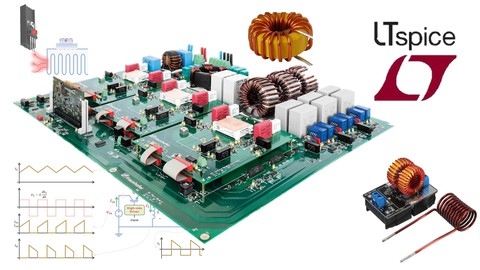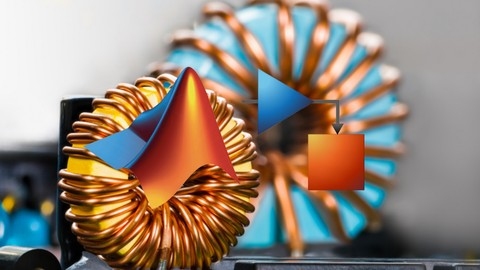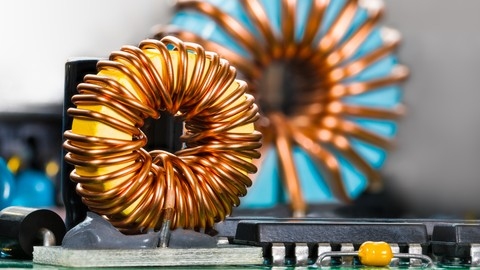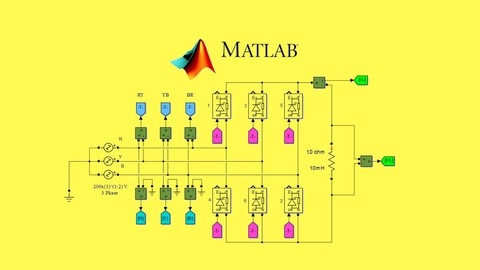Power electronics is a fascinating and critical field that deals with the conversion and control of electrical energy.
It plays a vital role in a wide range of applications, from powering everyday devices like smartphones and laptops to driving electric vehicles and enabling renewable energy systems.
By delving into the world of power electronics, you’ll gain a deep understanding of circuits, components, and control techniques, allowing you to design and implement efficient and reliable power conversion systems.
Learning power electronics can open doors to exciting career opportunities in various industries, including automotive, aerospace, and renewable energy.
However, with the abundance of online courses available, finding the right power electronics course on Udemy can be a daunting task.
You’re looking for a comprehensive program that covers both theoretical concepts and practical applications, taught by experienced instructors who can guide you through the complexities of this field.
You want a course that provides a solid foundation in power electronics principles and equips you with the skills needed to design, analyze, and implement power conversion systems.
Based on our research and reviews, the best power electronics course overall on Udemy is Basics of Power Electronics.
This course provides a comprehensive introduction to the field, covering fundamental concepts, circuit analysis, and practical applications.
It offers a well-structured curriculum, clear explanations, and hands-on examples to help you grasp the intricacies of power electronics.
You’ll learn about various power semiconductor devices, converter topologies, and control techniques, gaining a solid understanding of how to design efficient and reliable power conversion systems.
While Basics of Power Electronics is our top pick, we understand that you might have specific needs or preferences.
That’s why we’ve compiled a list of other excellent power electronics courses on Udemy that cater to different learning styles and skill levels.
So, keep reading to explore more options and find the perfect course to embark on your power electronics learning journey!
Basics of Power Electronics
This “Basics of Power Electronics” course provides a solid foundation in this critical field.
You’ll gain a deep understanding of fundamental concepts, including circuit analysis, RMS calculations, and thermal considerations, which are essential for successful power electronics design.
The syllabus emphasizes practical application through the use of LTSpice, a widely used simulation tool.
You’ll learn how to build and analyze circuits, allowing you to gain hands-on experience with real-world scenarios.
This course also covers a range of converter topologies, such as buck, boost, and buck-boost converters.
For example, you’ll learn how to design a buck converter to efficiently step down voltage from a 12V source to a 5V output, a common task in power supply design.
The course progresses systematically, introducing basic concepts before moving on to more advanced topics.
You’ll delve into areas like closed-loop buck converter design, double pulse testing of various materials like Silicon and Silicon Carbide, and how to design snubber circuits to prevent voltage spikes.
This comprehensive approach equips you with the knowledge and skills to tackle complex power electronics challenges.
Ultimate Power Electronics and Electrical Protection Bundle
This comprehensive course delves into the fascinating world of power electronics and electrical protection, providing a solid foundation for anyone seeking to understand the principles and applications of these critical technologies.
You’ll start by exploring the fundamentals of power electronic devices, gaining a deep understanding of key components like diodes, thyristors, BJTs, MOSFETs, and IGBTs.
The course then guides you through various rectifier circuits, including half-wave, full-wave, and three-phase rectifiers, equipping you with the skills to analyze their performance and optimize their operation.
You’ll learn about AC and DC choppers, essential devices for controlling power flow in both AC and DC circuits.
Inverters, which convert DC power to AC power, are another important topic, with the course covering different types and their applications in detail.
Beyond theoretical concepts, this course empowers you with practical skills by incorporating hands-on training in industry-standard software like ETAP and LogixPro.
ETAP, a powerful tool for power system analysis, allows you to perform simulations like load flow analysis, short circuit analysis, arc flash studies, and harmonic analysis.
This experience provides valuable insights into the real-world applications of power electronics and electrical protection.
You’ll also learn how to use LogixPro, a PLC simulator, to create and test ladder logic programs – the foundation of industrial automation.
The hands-on experience with ETAP and LogixPro will provide you with a distinct advantage in the job market, opening up career opportunities in fields like power systems, industrial automation, and renewable energy.
MATLAB/Simulink for Power Electronics Simulations
This comprehensive course equips you with the practical skills to simulate power electronic circuits using MATLAB/Simulink.
You’ll dive straight into the fundamentals, beginning with a solid introduction to the software, including installation, library navigation, and essential components like rectifiers, DC-to-DC converters, and inverters.
The curriculum delves into the intricacies of building models for both single-phase and three-phase systems, covering different rectifier types, including half-wave and full-wave configurations.
You’ll learn to master the creation of duty cycles, a crucial aspect of DC-to-DC converter design, and explore the simulation of buck, boost, and buck-boost converters in Simulink.
The course also provides a thorough understanding of control systems designed specifically for these converters.
The final section focuses on inverters, guiding you through the creation of switch pulses for both single-phase and three-phase inverters, and then simulating their behavior within the Simulink environment.
Electrical Engineering: Power Electronics Masterclass
This “Power Electronics Masterclass” offers a comprehensive journey into the world of power electronics, covering essential concepts and practical applications.
You’ll begin by exploring rectifiers, those essential components that convert AC power to DC power, and you’ll learn about the various types, including half-wave and full-wave rectifiers.
The course then moves on to three-phase rectifiers, which handle high power levels, a crucial topic for anyone working with industrial applications.
Next, you’ll delve into the world of DC-to-DC converters, learning how they efficiently transform DC voltage levels.
You’ll explore different types of converters, including buck, boost, and buck-boost converters, and discover their real-world uses.
You’ll also gain a deep understanding of the role of power MOSFETs in these converters, building a solid foundation for designing and implementing these circuits.
Finally, you’ll conclude with a thorough exploration of inverters, the components that reverse the process, converting DC power back to AC power.
You’ll learn about both single-phase and three-phase inverters and how they function with resistive loads.
This comprehensive coverage will equip you with the knowledge and skills to master power electronics, making you a valuable asset in any field where power management is critical.
MATLAB for Power Electronics: Simulation & Analysis
This syllabus outlines a comprehensive journey through the world of power electronics, utilizing MATLAB as your primary tool.
You’ll start with the fundamentals of power electronics, laying a solid groundwork for understanding the behavior of various circuits.
The course then introduces MATLAB and Simulink, guiding you through building simulation models that bring your designs to life.
You’ll learn how to model electrical circuits, simulate power electronics switches, and format your results for clear presentation.
The curriculum dives deep into different types of converters, covering DC/DC converters like buck, boost, and buck-boost.
You’ll even get a chance to apply your knowledge by building a 72V to 12V converter for an electric vehicle, a practical application that demonstrates the real-world relevance of these concepts.
The course expands to include DC/AC converters, where you’ll explore single-phase and three-phase inverters, gaining experience with various waveforms and techniques.
You’ll also delve into AC/DC converters, analyzing controlled rectifiers and gaining insights into the interaction between AC and DC power.
Finally, the course introduces AC/AC converters, exploring ac regulators, integral cycle ac controllers, and ac choppers.
A crucial aspect of power electronics is understanding harmonics, and this course doesn’t shy away from that.
You’ll learn about THD (Total Harmonic Distortion) and how to analyze it using MATLAB.
You’ll explore FFT analysis and gain insight into the influence of inductance on current waveforms and THD.
Basics of Power Electronics & Practical Guide with PSIM
You’ll get a solid foundation in the fundamentals of power electronics, starting with the construction and operation of SCRs (Silicon Controlled Rectifiers).
You’ll explore key characteristics like VI, static, and dynamic characteristics and learn about different turn-on methods for controlling SCR behavior.
The course then dives into the critical role of firing circuits in triggering SCRs, covering concepts like resistance (R) firing circuits, UJT (Unijunction Transistor) relaxation oscillators, and RC (Resistance-Capacitance) firing circuits.
You’ll also get a thorough understanding of how to protect SCRs from potential damage.
One of the course’s key strengths lies in its focus on practical applications through the use of PSIM software.
You’ll get hands-on experience with various types of converters, like choppers for DC-DC conversion and rectifiers for AC-DC conversion.
The course covers the theory behind step-down and step-up choppers, single-phase half-wave and full-wave controlled rectifiers, and semi-converters.
With PSIM, you’ll be able to simulate and experiment with these converters, gaining valuable experience in real-world scenarios.
The course also introduces you to AC-AC converters, also known as AC voltage controllers, where you’ll learn how to regulate AC voltage using different techniques.
You’ll further enhance your practical skills by using PSIM to simulate and experiment with these controllers.
The final module explores DC-AC converters (inverters), covering different types like half-bridge inverters.
This comprehensive program is rounded out with practical numerical problems on SCRs and converters to reinforce your learning, followed by a final test to assess your grasp of the subject matter.
This course provides you with a strong foundation in power electronics, bridging theory with practical application through hands-on PSIM experience.
Introduction to Power Electronics: From Theory to Practice
This “Introduction to Power Electronics: From Theory to Practice” course provides a comprehensive foundation in the field.
You’ll start with a solid understanding of AC circuits, covering topics like phase shift, RMS value, and harmonics.
This is important because power electronics heavily relies on AC circuits for its applications.
The syllabus also emphasizes practical application, integrating MATLAB/SIMULINK for circuit simulations.
This is a crucial element, allowing you to see theoretical concepts in action and develop valuable problem-solving skills.
The course goes beyond basic theory, delving into various power electronics components like diodes, thyristors, and IGBTs.
You’ll learn about their characteristics and how they function within different power conversion systems.
You’ll also explore diverse power electronics applications, including DC/AC, AC/DC, AC/AC, and DC/DC converters, gaining a solid understanding of how they are used in real-world scenarios.
A strong emphasis on reactive power and its impact on circuits will equip you with a deeper understanding of power flow and efficiency.
Power Electronics: Control and Simulation of PWM Inverters
This course on “Power Electronics: Control and Simulation of PWM Inverters” is a comprehensive and practical introduction to the world of power electronics, particularly focusing on the design, control, and simulation of PWM inverters.
The syllabus delves deep into the fundamentals of three-phase voltage source inverters, exploring their real-world applications and the various modulation techniques used to control their output.
You’ll gain hands-on experience with these techniques through simulations, starting with the basics of PWM modulation and venturing into more advanced techniques like third harmonic injection.
A key focus is placed on understanding and implementing current control strategies, allowing you to precisely manage the flow of electricity within your circuits.
The course uses the d-q transformation to simplify the analysis of inverters, and you’ll gain a deep understanding of how to model and control them.
The course further explores the vital aspect of grid synchronization, teaching you how to use phase lock loops (PLLs) to ensure your inverters operate seamlessly with the grid.
You’ll learn to tune these PLLs and simulate their behavior.
Beyond theory, the course emphasizes practical implementation, guiding you through the design and control of inverters using microcontrollers.
You’ll learn the intricacies of finite state machines, data acquisition, and software structure for efficient control.
The course leverages the power of Simulink software to provide you with a visual and interactive learning experience.
The use of this powerful simulation tool allows you to solidify your understanding of the complex concepts covered in the course and provides you with a valuable tool for future design and development work.








